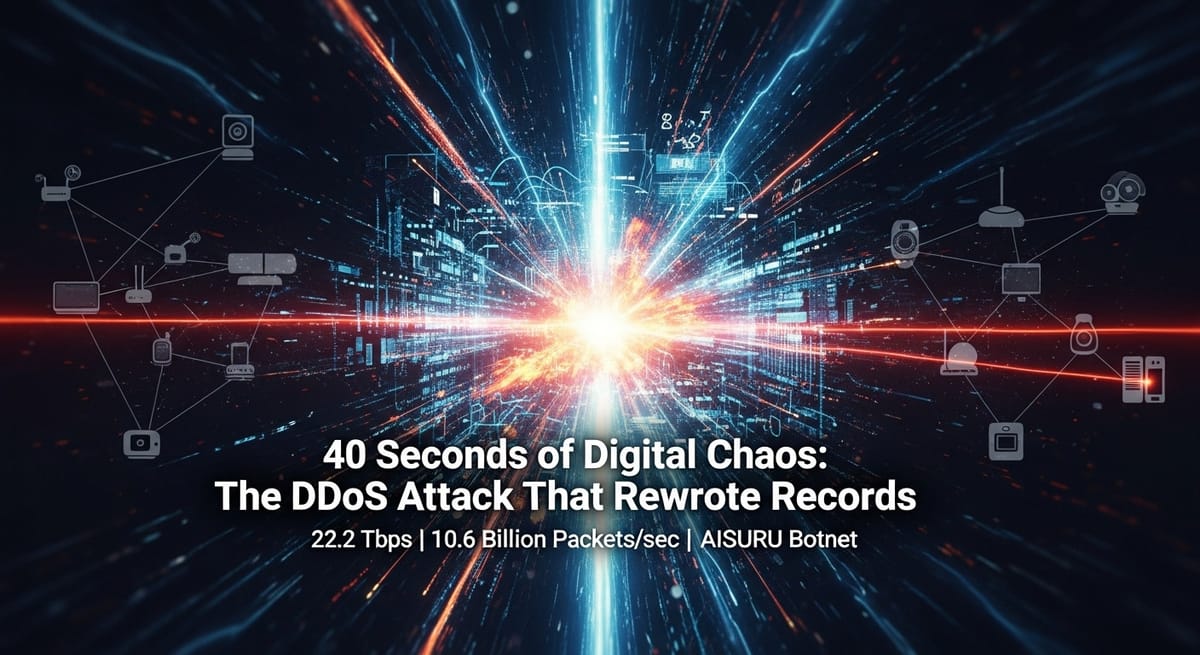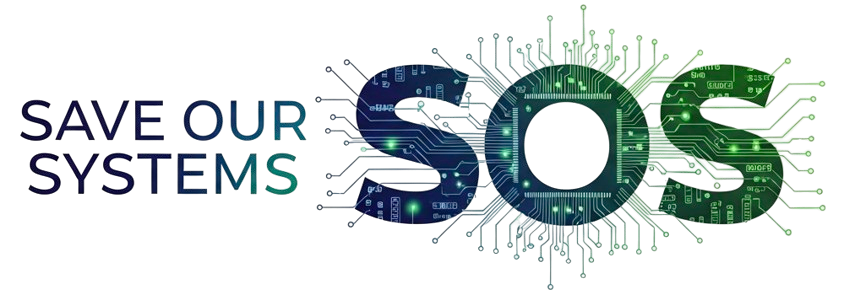40 Seconds of Digital Chaos: The DDoS Attack That Rewrote Records

In a stunning development that has shaken the cybersecurity world, Cloudflare successfully mitigated a distributed denial-of-service (DDoS) attack that peaked at an unprecedented 22.2 terabits per second (Tbps) and 10.6 billion packets per second (Bpps). This 40-second digital onslaught represents not just a new record, but an alarming escalation in the scale and sophistication of modern cyber threats.
A Rapidly Escalating Threat Landscape
The record-breaking attack represents a disturbing trend in DDoS capabilities. Just three weeks prior, Cloudflare had mitigated what was then the largest publicly announced attack at 11.5 Tbps. Two months before that, they handled another record-setter at 7.3 Tbps. This rapid escalation—effectively tripling attack volumes in a matter of months—signals a concerning new chapter in cybersecurity threats.
"The volume of traffic directed at the victim was enormous, roughly equivalent to streaming one million 4K videos simultaneously," noted security researchers analyzing the incident. Perhaps more concerning was the packet rate of 10.6 Bpps, which can be visualized as approximately 1.3 web page refreshes per second from every person on Earth.
The AISURU Botnet: A Growing Menace
Behind this digital tsunami lies the AISURU botnet, a sophisticated threat network that has infected more than 300,000 devices worldwide. According to research from Qi'anxin's XLab division, AISURU experienced a sudden growth surge in April 2025 after compromising a Totolink router firmware update server—a classic supply chain attack that allowed rapid scaling of the botnet's resources.
The botnet's strategy focuses primarily on IoT and networking devices, exploiting vulnerabilities in:
- IP cameras
- DVR/NVR systems
- Devices using Realtek chips
- Consumer routers from major manufacturers including T-Mobile, Zyxel, D-Link, and Linksys
Why This Attack Is Different
While DDoS attacks typically aim to exhaust either system or network resources to make services slow or unavailable to legitimate users, several factors make this incident particularly significant.
First, the short duration—just 40 seconds—suggests either testing behavior or a demonstration of capabilities rather than a sustained attempt to disrupt services. This pattern is consistent with threat actors showcasing their abilities or probing defenses for future, potentially longer attacks.
Second, the massive packet rate presents unique challenges for defense infrastructure. Even when bandwidth is manageable, the sheer number of packets can overwhelm packet processing capabilities in firewalls, routers, and load balancers.
The Persistent IoT Vulnerability Problem
The AISURU botnet's exploitation of various consumer devices highlights the persistent security challenges in the IoT ecosystem. The compromise of a firmware update server is particularly concerning as it represents a trusted channel that users and devices rely on for security improvements.
"The targeting of devices from multiple major manufacturers suggests either a common vulnerability across platforms or sophisticated multi-vector exploitation capabilities," explained a security researcher familiar with the incident. "This emphasizes the need for improved security practices in IoT device development, deployment, and maintenance."
Implications for the Future
Despite the unprecedented scale of these attacks, Cloudflare's successful mitigation demonstrates significant advancement in defense capabilities. However, the rapid escalation in attack scale raises questions about whether even the most robust defenses can keep pace with evolving threats.
As DDoS attacks continue to grow in both frequency and scale throughout 2025, organizations must prioritize resilient infrastructure, comprehensive security practices, and ongoing monitoring to protect against these increasingly powerful digital onslaughts.
Sources
- Cloudflare. (2025). Cloudflare mitigates new record-breaking 22.2 Tbps DDoS attack. Bleeping Computer.
- Cloudflare. (2025). Cloudflare blocks record-breaking 11.5 Tbps DDoS attack. Bleeping Computer.
- Cloudflare. (2025). Cloudflare blocks record 7.3 Tbps DDoS attack against hosting provider. Bleeping Computer.
- Cloudflare. (2025). Cloudflare mitigates record number of DDoS attacks in 2025. Bleeping Computer.
- Qi'anxin XLab. (2025). Super Large-Scale Botnet: AISURU. Qi'anxin XLab Research Division.




